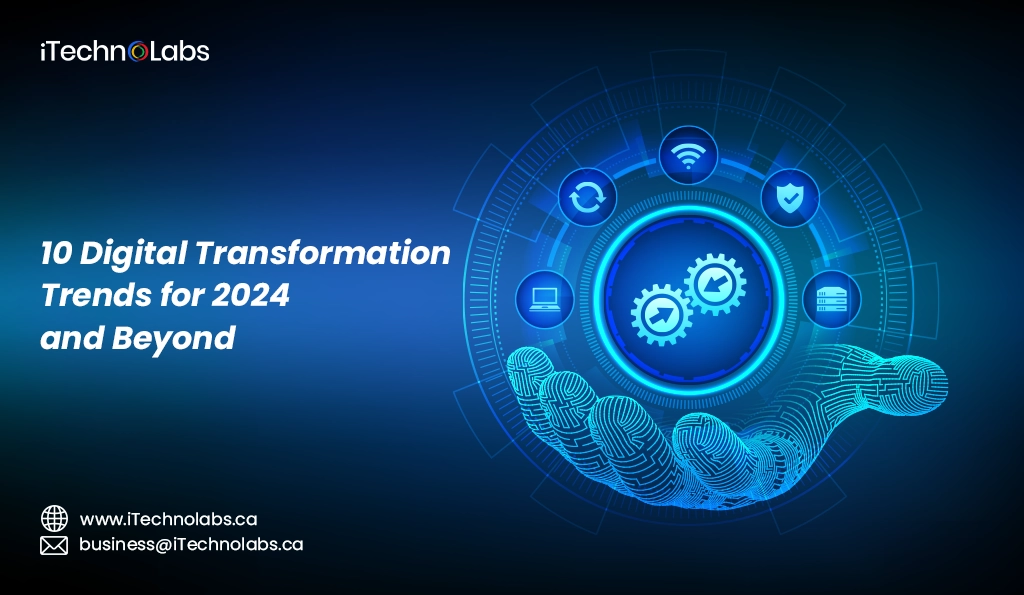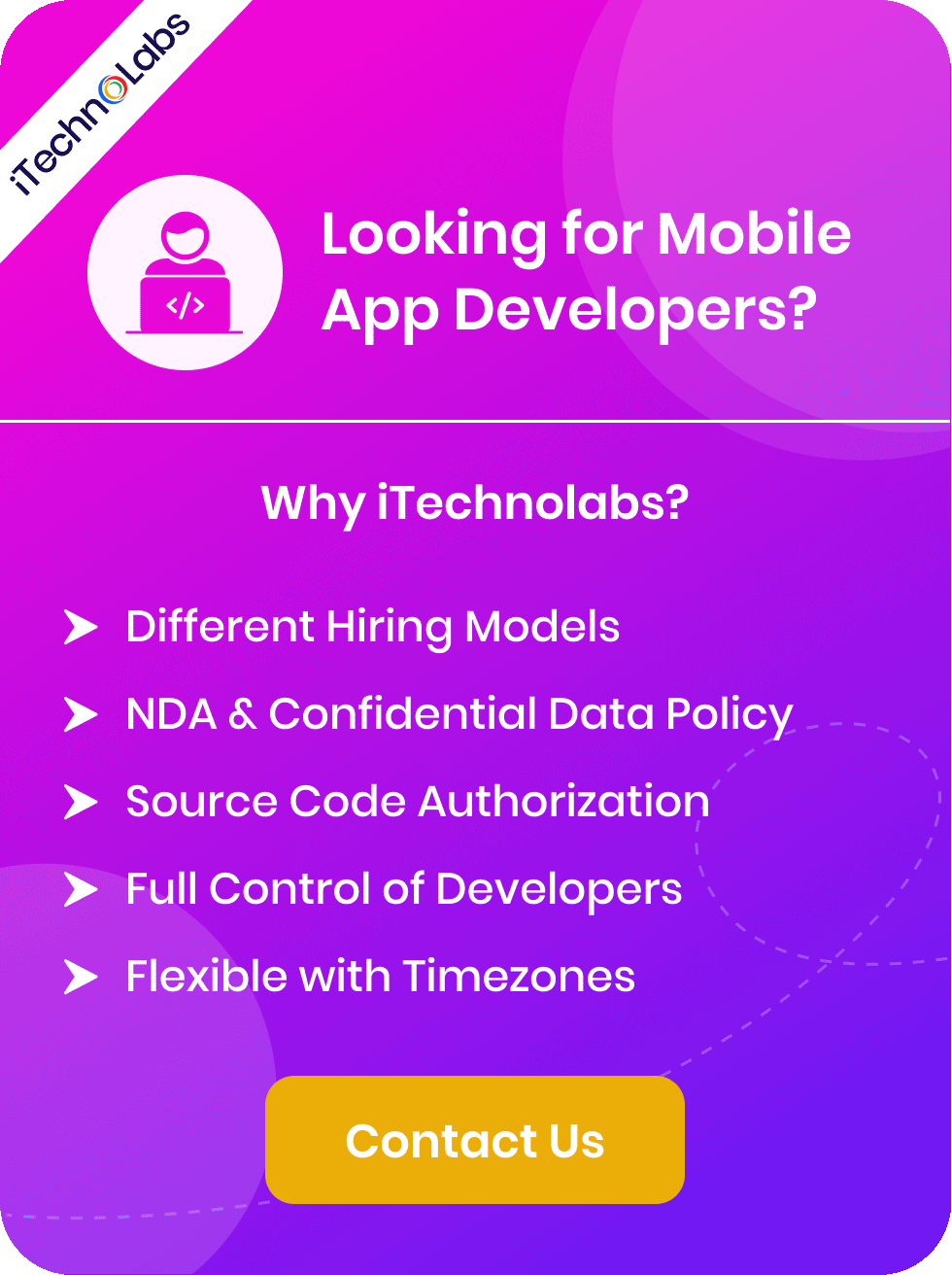“At least, 40% of all businesses will die in the next 10 years. If they don’t figure out how to change their entire company to accommodate new technologies.” John Chambers, the former CEO of CISCO
The above prediction was made nine years back, in 2015, which highlighted the necessity of digital transformation for businesses. And today, it has become the reality of nearly 89% of businesses that have already adopted a digital-first business strategy or are planning to do so. The chase for delivering the ultimate digital experience and satisfying the evolving demands of consumers have compelled businesses to jump onto the digital transformation bandwagon.
Today, companies, regardless of their size and industry, are adopting strategic shifts in the digital transformation process. From AI-driven personalization to metaverse evolution, businesses are quickly shifting to the new reality.
The global digital transformation market is to grow significantly. With an expected CAGR of 24.1% between 2024 and 2030, it is projected to reach a market value of USD 3144.9 billion (Source: MarketsandMarkets).
Nevertheless, with every company making this strategic shift, the battle to stay competitive has intensified.
So, what’s the way out?
With an increased focus and adoption of digital transformation emerges new trends. With consumer’s changing demands, what fruited yesterday may not yield exceptional results tomorrow. Hence, to stay competitive, organizations must evolve with the latest digital transformation trends.
Also Check: What is Digital Transformation?
Before diving into the digital transformation trends 2024 and further, let’s quickly go through the reasons that necessitate it for businesses:
Why Is Digital Transformation Crucial For Organizations?
To meet the evolving customers’ demands! Well, that’s just one of the many benefits. Businesses can leverage digital transformations to achieve a lot, from being an existential imperative to 8x more likely to be among the industry’s most successful companies. Here are some of the top benefits of digital transformation:
1. Increased customer satisfaction
With customers’ expectations at the pinnacle in terms of personalization and automation, customer experience (CX) is the new battleground for businesses.
Over two-thirds of brands say they are competing mostly on customer experience (Source: Gartner).
Digital transformation is one way that significantly helps businesses achieve better satisfaction as well as retention rates. By implementing digital strategies and tools, like automated processes, businesses can meet their customers’ demands the way they expect.
2. Drive Data-Based Insights
By transforming digitally, businesses are able to collect and analyze data and turn it into actionable, revenue-making insights. Unlike earlier times when the data was scattered and insignificant, businesses can now analyze and translate data into information promoting informed corporate decision-making. With digital transformation, businesses can achieve robust data collection, data engineering tools, and centralized data storage.
3. Encourages Digital Culture
Equipping the team with the right tools and creating a digital culture creates a tailored environment for them. These tools not only promote seamless collaboration but also help to move the entire organization ahead digitally. This digital culture transformation allows organizations to sustain the competition through upskilling and digital learning.
4. Increased Profits
Digital transformation improves the efficiency of business processes, which ultimately results in higher profitability.
Nearly 56% of CEOs say digital improvements have significantly increased their revenue (Source: Gartner).
In a nutshell, organizations can utilize digital transformation to achieve their specific business goals and objectives.
10 Digital Transformation Trends To Adopt in 2024 To Succeed and Stay Competitive
So, without further ado, let’s take a look at the digital transformation trends to follow in the times ahead.
1. AI-Driven Personalization
AI personalization refers to the use of AI algorithms to offer highly specific products and services, tailored to the recipients. Instead of providing one-for-all marketing messages, products, services, or experiences, brands can respond and outreach specifically to individuals based on their preferences.
AI uses machine learning (ML) to analyze vast customer data, such as browsing patterns, social media interactions, purchases, etc. It uses this information to understand customers’ unique preferences and expectations and make future predictions based on the same. This way, brands can offer hyper-personalized services that consumers are more likely to engage with.
AI personalization has a huge impact, leading to increased customer engagement and increased conversions.
At present, 92% of businesses are using AI personalization to achieve more growth and revenue. (Source: Twilio Segment)
A prominent example of AI personalization is e-commerce giants like Flipkart, Sephora, and Amazon offering personalized product recommendations. This makes shopping more enjoyable, convenient, and convenient for users.
In the times ahead, AI personalization will further improve and enhance the effectiveness of personalized experiences.
- Emerging trends such as Chatbots and Voice Assistants will leverage AI to offer personalized customer experiences.
- With the latest extraordinary AI capabilities for natural language processing, Chatbots will become more sophisticated to serve customers’ needs.
- Augmented reality (AR) and virtual reality (VR) technologies will be employed to provide personalized shopping experiences. These technologies will enable customers to visualize products in their own environment and make informed purchase decisions.
However, to be able to adapt to these emerging AI-personalization trends, businesses should build high-quality data infrastructure with robust data privacy and security measures to protect customer information. Plus, they should also take measures to build an innovative culture, encouraging their teams to test and improvise new personalization strategies and technologies.
2. Quantum Computing
As the competition for quantum supremacy intensifies, quantum computing is set to transform the digital space in 2024 and beyond.
Quantum computing promises to solve even the most complex problems that are impossible to solve in areas, such as cryptography, drug discovery, and material science. Unlike classical computing which performs calculations sequentially using bits (0 or 1), quantum computing allows representing and processing vast amounts of data simultaneously. It does this by using quantum bits, or qubits, existing in one or more states (0, 1, or both at once).
One key application is drug discovery. Quantum computers can quickly simulate molecular interactions and speed up the process. Another area is cryptography, where quantum computing can break the traditional encryption methods, presenting both a threat and an opportunity.
Even though practical quantum computers are still new, many organizations are investing a lot in research and development. This will help them leverage the potential of this groundbreaking technology.
Must Read: Quantum App Development: Journey to Next-Gen Technology
3. Advanced AI Systems (ASI, AGI, ANI)
Advanced AI systems are types of AI that help machines think and learn in different ways. Primarily, there are three types:
- AGI (Artificial General Intelligence) – AI systems that have human-level intelligence and can understand, learn, and apply knowledge across a range of tasks, like humans.
- ASI (Artificial Super Intelligence) – AI systems that exceed human intelligence and are smarter than humans in all areas. They can solve highly complex problems and suggest solutions that humans can’t even think of.
- ANI (Artificial Narrow Intelligence) – ANI focuses on specific tasks, unlike AGI and ASI. These are extremely good at one specific task but cannot perform anything else. For example, an ANI system might be brilliant at recognizing faces in photos or driving a car, but it won’t be able to do both.
Each type has its own unique applications but has become pivotal for businesses in their digital transformation. According to McKinsey, AI adoption has increased, with 50% of companies integrating AI in at least one business function.
For example, AGI could revolutionize healthcare by diagnosing diseases and suggesting treatments. ASI, on the other hand, could potentially contribute to innovations like autonomous cities, where AI manages everything from traffic to energy use.
As businesses shift to these advanced AI systems, they drive more efficiency, innovation, and significant economic impact.
4. Ethical AI and Bias Mitigation
As AI continues to advance, prioritizing ethical and responsible development has become more important than ever.
Ethical AI development means developing systems that prevent harm and prioritize the well-being of users. To achieve this, detecting and addressing potential biases in training algorithms that ensure AI systems are fair and significant for all.
However, addressing AI bias has been a challenge, and the focus on mitigating bias is expected to increase in 2024. It is expected that organizations and policymakers will work together to establish guidelines for responsible AI deployment.
Actionable tips:
- Fair Algorithm – AI algorithms that make fair decisions should be designed, ensuring they don’t favor one group over another for any reason. For example, if AI is used to decide who gets a job, it should be a fair decision.
- Diverse Training Data – Since AI learns from data, if the data itself is biased, the AI will learn to be biased. To avoid this, using diverse training data is required. This means using data that represents all kinds of people fairly, preventing reinforcing stereotypes.
- Transparency – AI should be easily comprehensible and explainable about how it makes decisions. This would help us trust AI and fix any issues if it makes a mistake.
5. Metaverse Integration
A key transformation expected this year is integrating the metaverse, a collaborative virtual world beyond traditional online communication. It combines immersive technologies, like augmented and virtual reality, promoting a seamless transformation process.
In short, the metaverse is a network of interconnected online worlds, in which physical, virtual, and augmented realities interconnect.
Businesses are increasingly shifting to the metaverse and exploring its potential to improve virtual events, product experiences, and customer services. For instance, using metaverse, virtual events can be made more interactive, and engaging, providing unique experiences to attendees worldwide.
With research showing that the metaverse market could reach USD 1.6 billion by 2030, this trend is significant. Its integration has the potential to transform how businesses connect with their target audience, offering new and immersive digital environments for interaction and engagement.
6. Sustainable Technology
Another hot trend that is expected to prevail is sustainability through technology. It is expected that technology that supports sustainability will make a difference.
The increasing worry about how technology affects the environment is a major concern for all. This concern is pushing for new ways of doing things that are less harmful to the planet.
In 2024, businesses must focus on leading sustainability goals set by governments, especially the European Union. Beginning in 2021, all large companies and listed SMEs will be needed to produce sustainability reports. This will impact small and medium-sized unlisted companies as well. This mandate will ensure suppliers meet sustainability standards for a sustainable supply chain.
78% of consumers consider a company’s environmental practices when making purchase decisions (Source: Salesforce).
To meet these demands, businesses are leveraging technology to ensure sustainability data is verifiable and used for reputation improvement, risk reduction, and positive environmental impact.
To achieve this, companies must focus on areas, including:
- Green data centers using efficient cooling systems and renewable sources like solar energy.
- Carbon Footprint reduction by finding ways to minimize carbon dioxide and other greenhouse gasses produced. Achieved by making supply chains more efficient and encouraging remote work to reduce the need for transportation.
- Circular Economy through the reuse and recycling of resources, such as electronic devices.
7. Edge Computing
This technology has steadily increased over the past few years and is expected to surge in 2024 and beyond.
Edge computing focuses on decentralized processing closer to data centers. This approach has several benefits, especially for real-time applications that demand low latency, such as remote surgery, smart manufacturing, or self-driving cars.
According to Matt Salter, Onnec Sales Director, “Edge data centers are becoming increasingly popular as they help to lay the necessary infrastructure for futuristic technologies such as cloud computing, 5G, Artificial Intelligence, and Machine Learning.
Edge computing is decentralized computing power that makes these applications faster and safer, improving their overall performance. Further, processing data locally helps optimize the use of available network bandwidth.
8. Low or No Code Platforms
With advancement happening at lightning speed, businesses look to optimize their IT processes and drive innovation to stay competitive. In this context, organizations and developers are increasingly focusing on low or no-code platforms, which will be on the rise in 2024 and beyond. Low or no-code platforms are visual tools to build applications without extensive coding.
The global market for low-code no-code development platforms is valued at nearly $15 billion and is expected to quadruple in the next five years (Source: ISG Information Services Group).
Unlike full-scale IT development that takes up to 2 years, low or no-code platforms save up to 70% on costs. It not only increases process efficiency but also improves employee productivity. Also, the set-up time can be as low as 3 days. Further, non-technical or citizen developers can build software in visual environments easily.
Furthermore, low or no code platforms contribute to business agility in dynamic environments. Since businesses can quickly design and develop an application, they can quickly respond to changing market needs, experiment, and adapt to new ideas and processes, as required.
9. CyberSecurity Advancements
Cybersecurity has always been integral to digital transformation. It protects sensitive data, reduces the risk of costly consequences, and ensures compliance with regulatory standards. In 2024, cybersecurity advancements will prevail. To maintain a balance between continuous development and security, businesses will move from independent security tools to integrated security solutions.
The cybersecurity innovations to expect this year, include:
- Zero Trust Security Models – Implementing continuous verification and least privilege access to ensure that every user and device is constantly authenticated and authorized.
- Artificial Intelligence for Threat Detection and Response – Leveraging AI to identify and respond to threats in real-time, improving the speed and accuracy of threat management.
- Quantum Resistant Encryption – Preparing for future quantum computing threats by developing encryption methods that can withstand potential quantum attacks.
10. Extended Reality (XR)
XR, comprising AR and VR, and mixed reality (MR), is expected to see significant advancement this year. The impetus for gaming, gains from education, focus on remote work and collaboration, and advancement in hardware technologies, are some reasons that will dominate XR in 2024. It will be driven by advancements in software and hardware capabilities.
Extended Reality (XR) is set to become a $160 billion industry in 2024. (Source Accenture).
Businesses will utilize XR technologies for immersive training simulations, customer experiences, and virtual product demonstrations. XR will reform how businesses interact with customers and employees, whether it’s virtual meetings or virtual showrooms.
Also Check: Digital Transformation On Fintech
The Takeaway
As the legendary business tycoon Warren Buffet said, Digital transformation is the fundamental reality for businesses today. To stay competitive in the market, businesses must keep up with the evolving digital marketing trends that reshape industries and push the boundaries of what AI can achieve.
As the world navigates the tech landscape, businesses must remain agile and open to innovation. Moreover, they must also be mindful of the ethical implications they come across while leveraging the power of AI. Embracing the above digital transformation trends 2024 will position businesses for success and contribute to responsible and virtuous tech advancement.
iTechnolabs, being a reputed tech company, makes it a point to keep track of the latest digital transformation trends when creating digital solutions for its clients. Not only does this help us build long-term relationships with our clients but also gives a competitive edge to their business.
For more information about our digital transformation services, or to discuss your project with us, contact us. https://itechnolabs.ca/contact-us/







